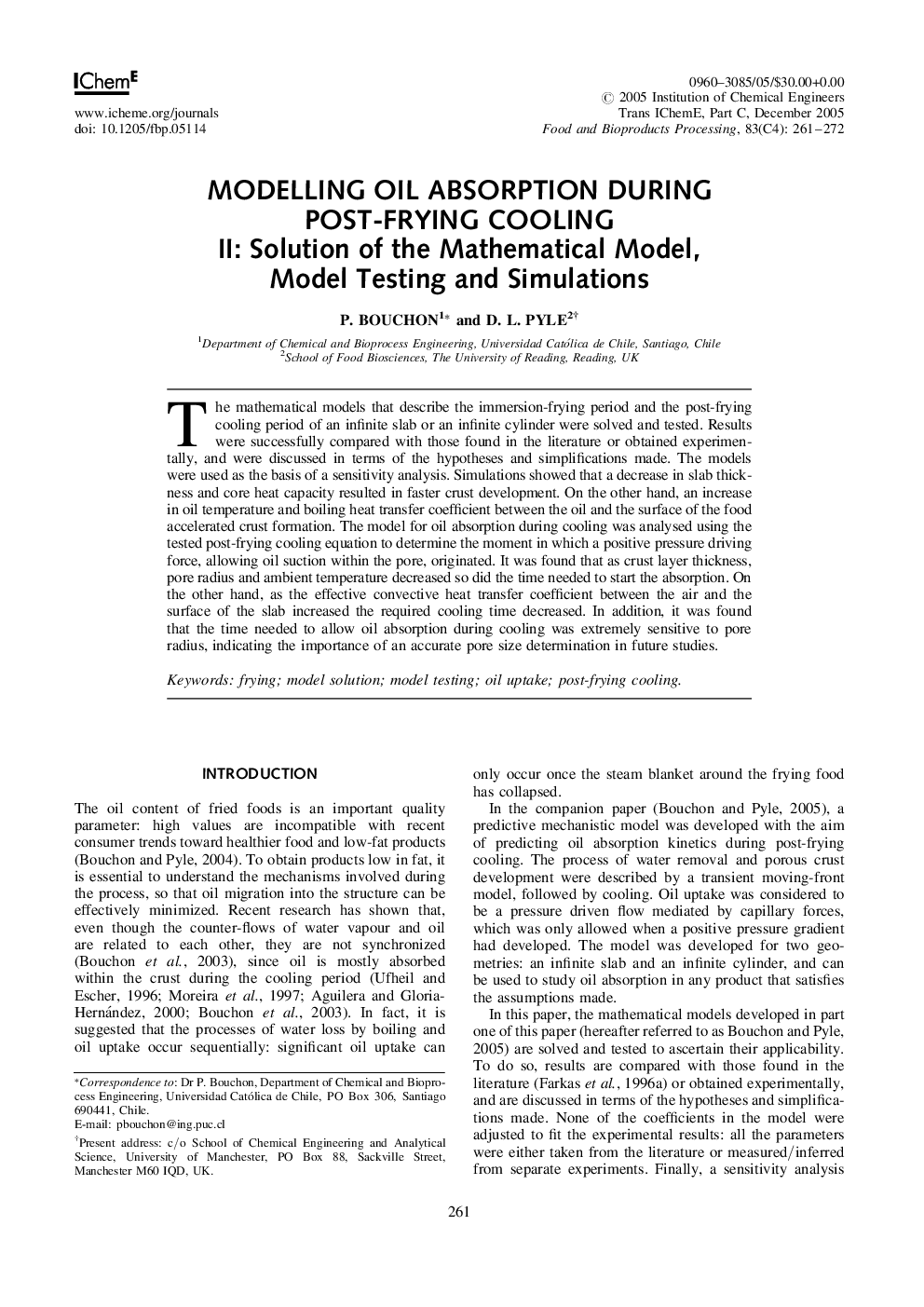| Article ID | Journal | Published Year | Pages | File Type |
|---|---|---|---|---|
| 10234454 | Food and Bioproducts Processing | 2005 | 12 Pages |
Abstract
The mathematical models that describe the immersion-frying period and the post-frying cooling period of an infinite slab or an infinite cylinder were solved and tested. Results were successfully compared with those found in the literature or obtained experimentally, and were discussed in terms of the hypotheses and simplifications made. The models were used as the basis of a sensitivity analysis. Simulations showed that a decrease in slab thickness and core heat capacity resulted in faster crust development. On the other hand, an increase in oil temperature and boiling heat transfer coefficient between the oil and the surface of the food accelerated crust formation. The model for oil absorption during cooling was analysed using the tested post-frying cooling equation to determine the moment in which a positive pressure driving force, allowing oil suction within the pore, originated. It was found that as crust layer thickness, pore radius and ambient temperature decreased so did the time needed to start the absorption. On the other hand, as the effective convective heat transfer coefficient between the air and the surface of the slab increased the required cooling time decreased. In addition, it was found that the time needed to allow oil absorption during cooling was extremely sensitive to pore radius, indicating the importance of an accurate pore size determination in future studies.
Related Topics
Physical Sciences and Engineering
Chemical Engineering
Bioengineering
Authors
P. Bouchon, D.L. Pyle,
